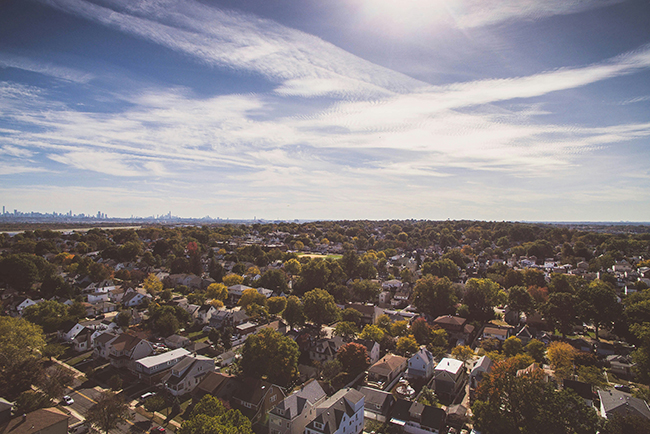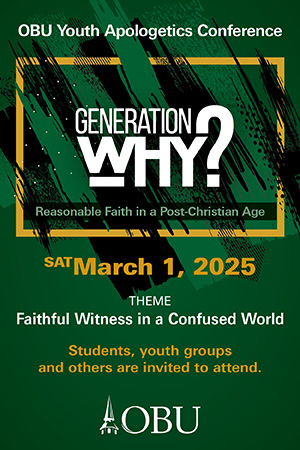Around 1 in 4 Americans are nonreligious, so some people far from God are near your church. What do you need to know about your nonreligious neighbors?
While the rapid growth of religiously unaffiliated Americans may be ending, a large portion of U.S. adults, particularly young adults, continue to say they’re not part of any religion.
Currently, anywhere from 1 in 5 to more than 1 in 3 Americans are part of the “nones,” which means those who are far from God are likely near your church.
Recent analysis by Pew Research explored the answers to several important questions about this group, including four that church leaders should understand as they seek to reach their nonreligious neighbors.
Who are the nones?
In general, a none is someone who chooses “none of the above” on a list of options for religious identity. This includes those who are atheist or agnostic but also those who say they are “nothing in particular.” That latter group makes up the majority of the religiously unaffiliated in America, as 63 percent of nones say they simply don’t have a religious affiliation. Fewer say they are agnostic (20 percent) or atheist (17 percent).
Nones are more likely to be younger than religious adherents. Around 7 in 10 nones (69 percent) are under the age of 50, compared to 45 percent of those who identify with a religion. In other words, most nones are younger than 50, while most religious Americans are older than 50.
While the religiously unaffiliated are split fairly evenly between men (51 percent) and women (47 percent), that is not the case in the nones subgroups. Religiously unaffiliated women (55 percent) are more likely than men (44 percent) to be nothing in particular. On the other hand, men in the group are around twice as likely as women to be atheists (64 percent v. 32 percent) and agnostics (62 percent v. 36 percent).
The racial demographics of the nones are similar to religious Americans overall, but atheists and agnostics are much more likely to be white. Around 3 in 5 religiously affiliated U.S. adults (61 percent) are white, compared to 63 percent of the religiously unaffiliated. Atheists (77 percent) and agnostics (69 percent) are far more likely to be white.
Atheist (48 percent) and agnostic (48 percent) adults are more likely than religious Americans (34 percent) to have graduated college, but those who are nothing in particular (27 percent) are less likely. Nonreligious Americans are also less likely than religious adherents to say they are politically conservative (15 percent v. 40 percent) and more likely to say they’re liberal (42 percent v. 17 percent).
As church leaders seek to reach nonreligious neighbors, they should be aware of the demographic realities of this group. They are more likely to be young, white, educated, and liberal. Any outreach efforts should keep that in mind.
Why are they nones?
Pew gave religiously unaffiliated Americans six options for reasons they do not belong to an organized religion. Most nones (67 percent) say the fact that they question a lot of religious teachings is a very or extremely important reason they’re a none. Almost half (47 percent) say it’s because they don’t like religious organizations. Two in 5 (41 percent) say they don’t see a need for religion in their life. Around 3 in 10 say they specifically don’t believe in God or a higher power (32 percent) or they’ve had bad experiences with religious people (30 percent). Fewer say a significant reason for their unbelief is because they don’t have time for religion (12 percent).
While there is no trendline between age and nones who say their disbelief in God is a motivation for their being unaffiliated, the younger a person is the more likely they are to say they question a lot of religious teachings, growing from 52 percent of nones 65 and older to 65 percent of those under 30.
A similar trend exists among age demographics and those who say they don’t see a need for religion in their lives. A third (33 percent) of those 65 and older say that is a very or extremely important reason they are nonreligious. That percentage grows as the age decreases, culminating at 45 percent of those under 30 giving that as a reason.
Different people have different rationale for their rejection of religion. These trends and demographic data exist, but individuals have their own mix of reasons. As churches seek to connect with their nonreligious neighbors, they should find out what drives that unbelief. Many may have never given it much thought and see it as pointless, while others may have had a traumatic encounter with a religious leader that soured them on faith.
Are all nones anti-religion?
Few nonreligious Americans (4 percent) have a completely positive view of religion, but few (19 percent) have a completely negative perspective based on five questions about religion’s impact on the world.
Overall, 43 percent of nones say religion does more harm than good in American society, 14 percent say it does more good than harm, and 41 percent say it does equal amounts of both. Additionally, 80 percent say religion causes at least a fair amount of division and intolerance, while 69 percent say the same about encouraging superstition and illogical thinking. On the other hand, 58 percent of nonreligious Americans say religion helps society by giving people meaning and purpose at least a fair amount, and 53 percent say religion encourages people to do the right thing or treat others well.
The more convinced someone is of their unbelief, the more likely they are to say religion is harmful to society. Atheists (73 percent) are more likely than agnostics (51 percent) and those who are nothing in particular (33 percent) to say religion does more harm than good in America. Additionally, the younger one is, the more likely they are to see religion as harmful. Almost half (48 percent) of nones under 30 believe that to be the case. Younger nones are also the least likely to believe religion helps society by giving people meaning and purpose and encouraging people to do the right thing.
As you engage nones in your community, chances are they have a mixed, at best, view of religion and religious organizations. While this may cause them to be initially skeptical, it also allows you to demonstrate how you are different and how the Gospel makes people and societies better.
What do nones believe?
In what should not be a surprise, nones are far less likely to believe in certain religious claims and participate in faith practices. There are, however, many nones who embrace both religious beliefs and actions.
Around 7 in 10 nones say they believe in God or some higher power (70 percent) and that people have a soul or spirit as well as a physical body (67 percent). Additionally, 63 percent say there is something beyond the natural world, even if we can’t see it. Fewer, but a still sizeable number, say they believe in heaven (36 percent) or hell (29 percent). Nones are more likely to say they believe all of these religious ideas (23 percent) than they are to reject them all (19 percent).
Compared to the oldest nones, younger nones are less likely to say they believe in God as described in the Bible (8 percent v. 21 percent) and more likely to say they believe in some other higher power (60 percent v. 48 percent).
In what may be considered a surprise, younger nones are no less likely to believe in heaven or hell. Lifeway Research’s State of Theology has found not only a consistent acceptance of hell among Americans but a growing agreement that “even the smallest sin deserves eternal damnation,” climbing from 18 percent in 2014 to 26 percent in 2020 and remaining steady at 25 percent in 2022.
Additionally, 5 percent of nones say religion is very important in their lives and 14 percent say it is somewhat important. Close to 1 in 8 (13 percent) say they pray daily, and another 16 percent pray monthly or weekly. Few (3 percent) say they attend religious services monthly or more, while 7 percent say they attend a few times a year. Only 1 percent of nones have a high level of religious commitment, but 35 percent have a medium amount.
As your church reaches out into the community, you will most likely encounter nones. Even if they say they’re not religious, however, you may have some common ground on religious beliefs and possibly even practices. Ask questions and engage with them to see where they are spiritually.






